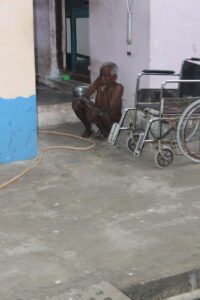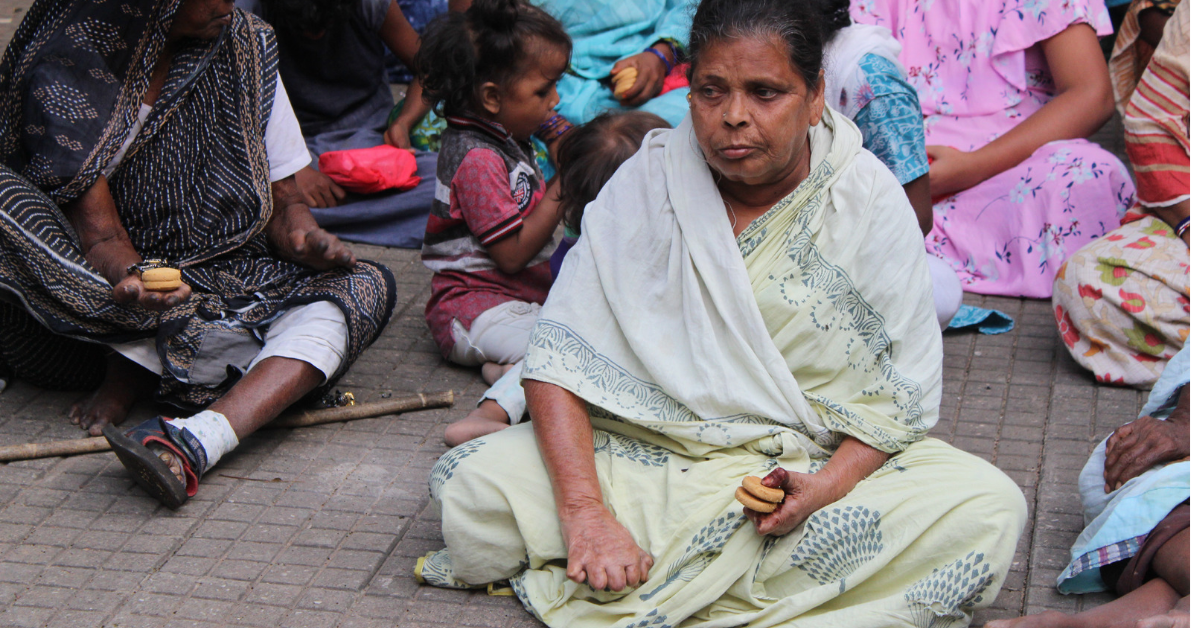Leprosy:
Leprosy is a bacterial infectious disease that causes skin lesions and nerve damage, prolonged and untreated induvial can lead to blindness.
Other name of leprosy is “Hansen’s disease”
Types: Leprosy is classified into two main types based on the immune response:
1. Tuberculoid leprosy: In this type, the body’s immune response is strong, leading to fewer skin lesions and nerve damage.
2. Lepromatous leprosy: This type occurs when the immune response is weak, resulting in extensive skin lesions and nerve damage.
Cause: Leprosy is caused by the bacteria Mycobacterium leprae,(ML for short) which primarily affects the skin, peripheral nerves, and respiratory tract. It is transmitted through prolonged close contact with an infected person, but its exact mode of transmission is not fully understood.
It affect Schwann cells and damages the myelin sheath which protects the nerve. If there is no barrier between nerves then it is easier to weaken the immune system to cause nerve damage and muscle weakness and often blindness too.
Signs and symptoms: Leprosy mainly affects the skin and nerves. Common signs and symptoms include:
– Skin lesions with reduced sensation or numbness
– Thick, pale or reddish skin patches
– Nodules or lumps on the skin
– Nerve damage, leading to muscle weakness and loss of sensation in affected areas
– Eye problems, such as blindness or loss of eyebrows
– Stuffy or runny nose, nosebleeds
Diagnosis: Leprosy is diagnosed based on clinical signs and symptoms, along with laboratory tests, such as skin biopsy or smears of nasal secretions.
Differential diagnosis: Some diseases with similar symptoms to leprosy include fungal infections, nerve compression syndromes, syphilis, sarcoidosis, and certain autoimmune disorders. Medical professionals use various criteria and tests to differentiate leprosy from other conditions.
Treatment and management: Leprosy requires long-term treatment with multiple antibiotics, such as dapsone, rifampicin, and clofazimine. The treatment duration can range from 6 months to a couple of years, depending on the type and severity of the disease. Early diagnosis and treatment can prevent complications and reduce transmission. It is crucial to follow the prescribed treatment regimen and attend regular medical check-ups.
Q & A
1. What is the scientific name for leprosy?
Answer: The scientific name for leprosy is Mycobacterium leprae.
2. What are the two main types of leprosy based on immune response?
Answer: The two main types of leprosy are tuberculoid leprosy and lepromatous leprosy.
3. How is leprosy primarily transmitted?
Answer: Leprosy is primarily transmitted through prolonged close contact with an infected person, but the exact mode of transmission is not fully understood.
4. What are the common signs and symptoms of leprosy?
Answer: Some common signs and symptoms of leprosy include skin lesions with reduced sensation or numbness, thick and pale or reddish skin patches, nodules or lumps on the skin, nerve damage leading to muscle weakness, and eye problems.
5. How is leprosy diagnosed?
Answer: Leprosy is diagnosed based on clinical signs and symptoms, along with laboratory tests such as skin biopsy or smears of nasal secretions.
6. What are some differential diagnoses for leprosy?
Answer: Some differential diagnoses for leprosy are fungal infections, nerve compression syndromes, syphilis, sarcoidosis, and certain autoimmune disorders.
7. Which antibiotics are commonly used to treat leprosy?
Answer: The common antibiotics used to treat leprosy are dapsone, rifampicin, and clofazimine.
8. What is the recommended treatment duration for leprosy?
Answer: The treatment duration for leprosy can range from 6 months to a couple of years, depending on the type and severity of the disease.
9. How can leprosy be prevented?
Answer: Leprosy can be prevented through early diagnosis and treatment, as well as promoting good personal hygiene and avoiding close and prolonged contact with infected individuals.
10. Is leprosy highly contagious?
Answer: No, leprosy is not highly contagious. It usually requires prolonged and close contact with an infected person for transmission to occur.
What is armadillo leprosy?
The relationship between leprosy and armadillos is interesting. Armadillos, specifically nine-banded armadillos, have been found to be naturally infected with the bacteria that causes leprosy, called Mycobacterium leprae. Armadillos are carriers of these infectious microorganisms.
Let`s understand with an example:
Let’s say that a person is living in an area where armadillos are common and frequently come into contact with them, either through handling or consuming armadillo meat. If an infected armadillo carries the bacterium Mycobacterium leprae, there is a small chance that the person might contract leprosy through direct contact or consumption of infected armadillo products.
It’s important to note that the risk of contracting leprosy from armadillos is relatively low, but it is not zero. Studies have shown a higher prevalence of leprosy in areas where armadillos are present, suggesting a potential link between the two.
However, it’s worth mentioning that leprosy transmission primarily occurs through human-to-human contact, specifically through prolonged close contact with someone already affected by the disease and who is not receiving treatment.
How and why does leprosy associated with social stigma ?
Leprosy, also known as Hansen’s disease, has long been associated with social stigma and discrimination. This stigma arises mainly due to misconceptions, fear, and lack of understanding about the disease. Here’s why leprosy is often stigmatized:
1. Historical Context: Throughout history, people with leprosy were isolated and segregated from society, primarily because the disease was poorly understood. This led to the belief that lepers were contagious and should be avoided.
2. Fear and Misconceptions: Leprosy is caused by the bacterium Mycobacterium leprae and primarily affects the skin, nerves, and mucous membranes. However, many people have misconceptions that it is highly contagious and easily transmitted. This fear leads to social stigmatization, as people may ostracize those affected, fearing they will contract the disease.
3. Visible Symptoms: Leprosy can cause visible symptoms, such as skin lesions, disfigurement, and loss of body parts due to nerve damage. These visible signs may lead to uncomfortable or negative reactions from others, contributing to social stigma.
4. Cultural and Religious Beliefs: Some cultures and religions have historically associated leprosy with divine punishment or as a consequence of immoral behavior. This perception has perpetuated stigma and discrimination towards individuals affected by the disease.
5. Lack of Knowledge and Education: Limited understanding about leprosy in many communities can perpetuate fear and stigmatization. Public awareness campaigns and education about leprosy’s causes, symptoms, and prevention are essential in combatting this stigma.
It’s worth noting that leprosy is curable with multidrug therapy and is not highly contagious. Efforts such as early diagnosis, timely treatment, community integration, and advocacy are crucial in reducing the social stigma associated with leprosy.
What is leper colony?
A leper colony, also known as isolated community for the treatment of lepers, Sometimes because of social stigma the separate colony and community established by govt. Leprosy is a chronic infectious disease caused by the bacterium Mycobacterium leprae, which affects the skin, nerves, and mucous membranes. Leprosy can cause deformities, disabilities, and social stigma.
Leprosy has a long and complex history, dating back to ancient times. It is believed to have originated in East Africa or the Near East and spread along human migration and trade routes. Leprosy was often associated with religious or moral judgments, and lepers were shunned and ostracized by many societies.
The first leper colonies were established in the Middle Ages, when leprosy was considered incurable and highly contagious. Lepers were confined to isolated places, such as islands, caves, or special institutions, where they received minimal care and support. Some religious orders, such as the Order of Saint Lazarus, dedicated themselves to serving lepers and providing them with medical and spiritual assistance.
In the 19th century, following the discovery of the cause of leprosy and the development of effective treatments, leprosy colonies became more humane and scientific. Many colonies were transformed into hospitals or research centers, where lepers could receive proper diagnosis, medication, and rehabilitation. Some colonies also developed their own culture and identity, with social and artistic activities.
In the 20th century, with the introduction of multi-drug therapy and the eradication of leprosy in many countries, leprosy colonies gradually declined and closed. However, some colonies still exist today, mainly in India, China, and some other countries, where leprosy remains a public health problem. Some former lepers choose to stay in the colonies, either because of lack of alternatives, or because of attachment to their community.
Let me share some images of leper colony from India


You may also like: https://easymedicine24.com/learning-disabilities-4/
More: https://dermnetnz.org/topics/leprosy-pathology
Thank You😇

